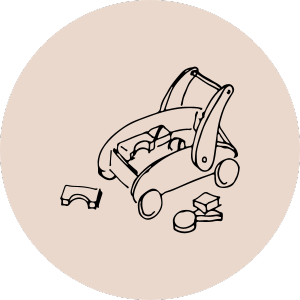
Outdoor Exploration:
Structured time for outdoor play & exploration in nature, allowing children to engage with the natural world, discover, and learn through hands-on experiences. We plan to take full advantage of our beautiful 5.5 acre lot in the Texas Hill Country through nature walks, gardening, and observing wildlife.

Child-Led Learning Centers:
Set up various learning centers within the classroom based on children’s interests and developmental needs. These centers could include areas for art, dramatic play, sensory activities, building blocks, and nature exploration.

Project-Based Learning:
Encourage long-term projects based on children’s interests. Teachers facilitate discussions, provide materials, and support children as they investigate topics of interest, fostering curiosity and critical thinking skills.

Social and Emotional Development:
Incorporate activities and discussions focused on building social skills, empathy, and emotional intelligence. This might include group discussions about feelings, conflict resolution strategies, and cooperative games.

Promoting Independence:
Provide opportunities for children to make choices and decisions throughout the day, such as selecting activities, managing their belongings, and problem-solving with peers. Teachers act as guides, supporting children in developing autonomy and confidence.

Literacy & Numeracy Through Play:
Introduce literacy and numeracy concepts through play-based activities rather than formal instruction. For example, counting natural objects during outdoor exploration, storytelling during dramatic play, or incorporating letters and numbers into art projects.

Assessment Through Observation:
Assess children’s progress through ongoing observation rather than formal testing. Document observations of children’s interests, skills, and social interactions to inform curriculum planning and individualized support.

Family Involvement:
Encourage family involvement through regular communication, invitations to participate in classroom activities, and sharing resources for extending learning experiences at home.

Flexibility and Adaptability:
Remain flexible and responsive to children’s changing interests and needs. Continuously adapt the curriculum based on observations and feedback from children, families, and educators.
